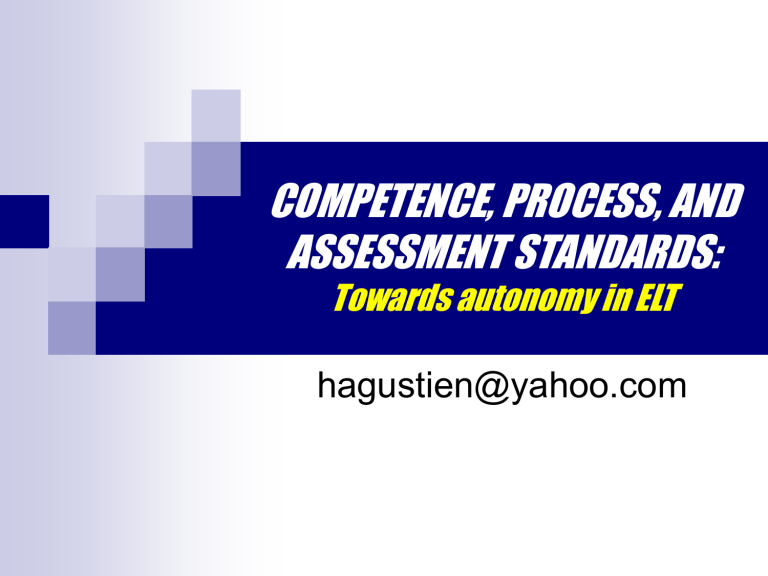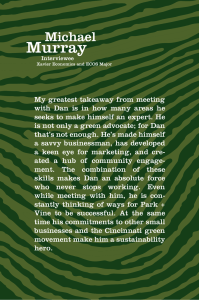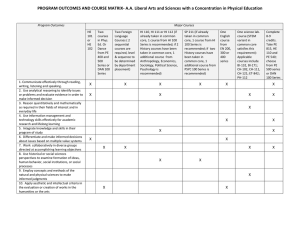
COMPETENCE, PROCESS, AND ASSESSMENT STANDARDS: Towards autonomy in ELT hagustien@yahoo.com The Government Regulation PP No 19, 2005 Language education should develop language competence with special emphasis on reading and writing according to the literacy level set up for every level of education. Competence Standards Copetence Standards (Standar Isi-2006) Ultimate Goal: • To participate in discourse or • To communicate ideas, feelings etc. in spoken and written English accurately, fluently, and in acceptable manners Standar Kompetensi Lulusan SMP (SKL) Listening Siswa mampu memahami wacana transaksional dan interpersonal, teks fungsional pendek serta monolog lisan yang berbentuk procedure, descriptive, recount, narrative, dan report secara akurat. SKL Speaking Siswa mampu mengungkapkan berbagai makna dalam wacana transaksional dan interpersonal, teks fungsional pendek serta monolog lisan yang berbentuk procedure, descriptive, recount, narrative, dan report secara akurat, lancar dan berterima. SKL Reading Siswa mampu memahami makna teks fungsional pendek dan teks berbentuk procedure, descriptive, recount, narrative, dan report secara akurat. SKL Writing Siswa mampu mengngkapkan makna secara tertulis dalam berbagai teks fungsional pendek dan teks berbentuk procedure, descriptive, recount, narrative, dan report secara akurat, lancar dan berterima. Strategic Socio – Cultural Comp. Competence Discourse Competence Competence Linguistic Comp.. Actional Comp. Discourse Competence Discourse competence concerns the selection, sequencing, and arrangement of words, structures and utterances to achieve a unified spoken or written text. (Celce-Murcia et al. 1995:13) Why Celce-Murcia et al.’s model? The proposed model has been motivated by their “belief in the potential of a direct, explicit approach to the teaching of communicative skills, which would require detailed description of what communicative competence entails in order to use the subcomponents as a content base in syllabus design” (1995:6) Text Explicit in the statement is that communication happens in text, spoken or written. Thus communicating is creating text, and this involves more than simply creating grammatical sentences. CULTURE Genre (Purpose) Situation Who is involved? (Tenor) Subject matter Channel (Field) (Mode) Register TEXT SPOKEN AND WRITTEN LANGUAGE CONTINUUM Most Spoken Language accompanying action Most Written Language as reflection Spoken Language Written Language Literacy Levels Performative Level (SD) Functional Level (SMP) Informational Level (SMA) Epistemic Level (Uni) Performative Level (Language accompanying action) Learners can Use English to accompany actions participate in classroom and school interactions, Recognise simple written English Functional Level Learners can use English to get things done use English for survival purposes (buying and selling, asking and giving permission, making and canceling appointments, read and write simple texts, read popular science, etc.) Informational Level Learners can use English to access accumulated knowledge (ilmu pengetahuan) use English in informal and formal contexts Epistemic Level Learners can use English to transform knowledge (doing reasearch, writing reports, lecturing etc.) use English for aesthetic purposes Coverage (Ruang Lingkup) Junior High School Descriptive Procedure Recount Narrative Report Senior High School News item Discussion Explanation Exposition Review Competence Standards (SK) & Basic Competence (KD) SPOKEN Short functional texts Transactional conv. Interpersonal conv. Monologues WRITTEN Short functional texts Essays in various genres Process Standards Process Standard (Bab IV, pasal 20) Perencanaan Proses Pembelajaran meliputi silabus dan rencana peleksanaan pembelajaran (RPP) yang memuat sekurang-kurangnya tujuan pembelajaran, materi ajar, metode pembelajaran, sumber belajar, dan penilaian hasil belajar ELT in Literacy Perspective Principles • ELT is to make people literate. • Literate person: able to participate in the modern community life that requires English • In the community, people USE English. • ELT is placed in the perspective of literacy education Interpretation Collaboration Literacy Principles Convention Cultural Knowledge Problem Solving Reflection Language USE Secondary Schools Integrating listening, speaking, reading and writing through communicative purpose Developing suitable materials Organising learning experiences based on the literacy principles Learning Experiences Teaching Techniques? Any techniques that work in the teacher’s environment will do Grammar exercises Oral drills Etc. As long as things move towards language use / communication How do we integrate the 4 skills? By organising materials and learning experiences into spoken cycle (listening and speaking) and written cycle (reading and writing) By organising activities in every cycle into four stages (building knowledge of the field, modelling of text, joint construction, independent construction) How do we plan our lessons? By Organising lesson plans based on the text type or genre. The purpose of text (e.g. giving direction) The structure of the text (e.g. recipe) Linguistic features (e.g. imperative, politeness, gambits, noun phrase) Can we use other ways of organising lesson plan? We can as long as: We are sure that they are compatible the basic philosophy of literacy education / language as communication Those methods have been tried out, studied, and proved to be successful in EFL contexts. What should be at the heart of any plans? Plans should be geared around NEGOTIATION OF MEANING NEGOTIATION IS THEY KEY TO DISCOURSE COMPETENCE It is carried out interpersonally and logicosemantically How do we negotiate? Interpersonally Logicosemantically Where in the sentence does interpersonal meaning reside? * In the Mood area Mood = Subject + Finite * Mood expresses: Attitudes Feelings Judgment Etc. Negotiating interpersonally A : I am sleepy. B : Are you? C : I love her. D : You do, don’t you. E : I cleaned the room! D : No, you didn’t! Negotiating logicosemantically A : I am sleepy. B : Sleepy or hungry? A : Both, actually. C : What’s your name? D : Hartati C : Where do you live? D : Jalan Diponegoro. Negotiation in Writing Focused on old and new information Focused on Theme and Rheme Old and New Information Once upon a time, there was an old lady. She was very poor, but she was happy. She had a handsome son called Ande-Ande Lumut. He was a fine young man. Many girls liked him. Negotiation is * The Communication Engine * The key to discourse competence Zone of Proximal Development Independent Learning zone Teacher intervention Peer-peer interaction Interactive discourse Assessment Standards Standar Penilaian Pendidikan (Bab X, pasal 63) a. b. c. Penilaian pendidikan pada jenjang pendidikan dasar dan menengah terdiri atas: Penilaian hasil belajar oleh pendidik; Penilaian hasil belajar oleh satuan pendidikan; dan Penilaian hasil belajar oleh Pemerintah. What do we assess? Communication that happens in texts Students’ ability to create and respond to texts In listening, speaking, reading, and writing What texts are used? Spoken Short functional texts Transactional and interpersonal dialogues Monologues in the target genres Written Short functional texts Essays in the target genres What meanings are tested? Ideational meaning – isi berita Interpersonal meaning – tujuan text, tindak tutur Textual meaning – termasuk punctuation Logical meaning – hubungan logis antargagasan Short Functional Texts (Listening) R: “Look. There are three owls sitting on the branch.” Q: “What does the speaker see?” Short Functional Texts (Listening) R: “Attention, please. Tomorrow we are going to take a train to Surabaya.” Q: “How are we going to Surabaya?” We are going to Surabaya by … Transactional dialogue (Listening) A: Any dessert, miss? B: Yes, please. May I have some ice cream, please?” A: Certainly. Q: What does the lady want? Interpersonal Dialogue (Listening) A: Do you like the food? B: Yes. This is delicious. A: I love it too. Q: How is the food? Monologue (Listening - descriptive) Mr. Hendrawan is a doctor. He works in a hospital and he takes care of sick people. He sees his patients everyday. Some of his patients are children. Children like Mr. Hendrawan because he his a kind man. Q: Which picture describes Mr. Hendrawan? Spoken Language (Short Functional Text) Diperdengarkan kalimat sederhana, siswa mampu menentukan informasi faktual dalam kalimat tersebut. Contoh: “Attention please… Argo Muria train from Jakarta will be arriving at platform one in about three minutes.” Items Ideational Which train will be arriving in Platform one? a) b) c) d) Interpersonal The speaker said, “The train will be arriving at platform one.” What does it mean? a) She gave information She wanted help She asked a question She gave instruction b) c) d) Dialogue A: Mum, I’m leaving! B: It’s cloudy, darling. Don’t forget the umbrella. A: I have it. Bye, mum. B: Bye. Context * Who were talking? a. Mother and son b. Teacher and student c. Student and student d. Mother and teacher Context • Where did the conversation happen? a. At home In a shop At school At a restaurant b. c. d. Ideational Meaning * What is A going to do? a. b. c. d. Go shopping Go to school Go swimming Go out Interpersonal Meaning • B said “It’s cloudy, darling. Don’t forget your umbrella.” What does it mean? a. B was protesting B was reminding B was complaining B was greeting b. c. d.





![----Original Message----- From: dan [ ] Sent: Saturday, March 19, 2005 2:45 PM](http://s2.studylib.net/store/data/015586590_1-50b22c4c7007ca3be53d569298f03bbe-300x300.png)